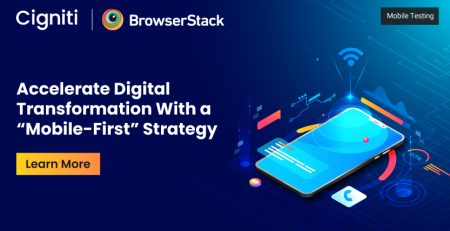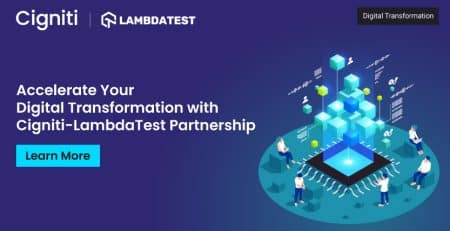Succeeding at Digital Transformation in today’s world
|
Listen on the go!
|
How can organizations truly get value out of their technology? The answer is “tech plus.” You cannot rely on technology in isolation. There are five key areas to look at.
First, focus on technical capabilities, like continuous integration, continuous delivery, version control, deployment automation, test automation, test data management, shifting left on security, and trunk-based development. Leveraging automation to allow for repeatability and consistency is key.
Second, investment in good architecture, including a loosely coupled architecture and empowering teams, is important. Good architecture provides a solid foundation.
Third, include product and process capabilities, like gathering customer feedback, improving your value stream, working in small batches, and encouraging team experimentation. Process provides consistency.
Fourth, spend time improving lean and agile processes, like limiting the change-approval process, including monitoring, having proactive monitoring, implementing work and process limits, and visualizing work.
Fifth, don’t forget culture. A strong organizational culture that optimizes for information flow and trust is important. Cultures that support learning, collaboration, meaningful work, and transformational leadership are important, too. Good work is not possible or sustainable in bad or toxic environments.
For years, technology was seen as just a cost center and it was ignored. It’s now being recognized as a true differentiator and value driver. But only because it is being leveraged in the right way. Remember, to get real value, it needs to be tech-plus.
Critical Ingredient in Digital Transformation
Digital transformation seems to be at the top of every firm’s priority list these days. Firms that transform with digital technologies gain a competitive advantage over their industry peers. Those that don’t are falling behind. But amidst all of the urgency, one of the most fundamental elements usually gets overlooked or misunderstood in this process, and that’s data.
Analytical processes and models bring many forms of data together to produce insights and answers for business. And then why is this part of digital transformation so difficult and time-consuming? The answer lies in the difficulty in changing our habits, both for the enterprise and for the individual. For enterprises, the long-standing habits of gathering, hoarding, and protecting data by function or team make it nearly impossible to integrate as an enterprise-wide asset.
As individuals, we tend to trust the intuition and judgement we’ve developed over our entire careers. The idea of using data to support our decisions can be a hard adjustment. Sometimes the data we’re presented with run counter to our intuition, putting us in a quandary, and because we don’t all have Ph.D.’s in statistics, the advanced analytical models can be intimidating, causing distrust and suspicion.
So, two points to remember: First, data and analytics are the bedrock foundation of any digital transformation. They need to be looked after early on. Second, digital transformation is much more about culture and behavior change than technology.
The Importance of CIO Leadership in Digital Business Transformation
The CIO and the IT unit are critical to the success of a digital business transformation. They are well positioned to lead the integration efforts. Think of the work that they’ve done in the past to integrate silos into platforms. CIOs and IT units of top-performing enterprises, those with net margins in the top quartile relative to their industry average, distinguish themselves in four areas.
One, the CIO spends more time with external customers, getting first-hand knowledge of the customer’s pain points and the integration initiatives that will create a better customer experience. Over the past five years, there has been a significant shift in the amount of time, from, (10% to 20%), that CIOs in top-performing companies spend with their customers.
Two, the CIO and IT units obsessively focus on innovation. In top-performing firms, recent innovations account for almost half of the revenues. Transforming the enterprise and then keeping it fresh and appealing to customers requires a constant stream of innovations, many of them digital, and the CIO and IT unit have the expertise to integrate them.
Three, the CIO and IT units, help build enterprise-wide digital discipline. They develop shared digital services, often via APIs, to enable faster time to market and to reduce duplication. They integrate core business processes using digital solutions, particularly to provide a better multi-product, multichannel customer experience. Finally, they help their colleagues be more effective at experimenting and scaling successes, typically using test-and-learn methods, like AB testing and analytics and other evidence-based decision-making techniques.
Four, the CIO is deeply engaged with the executive committee. CIOs in top-performing enterprises act more strategically. They sit on or regularly advise the executive team on how digital is changing firm competitiveness.
The difference between effective and ineffective CIOs and IT units is a major potential leverage point for the enterprise. It is worth investing in both.
Succeeding in Digital Transformation
Digital transformation is a $1.5 trillion industry as of 2021. And you know what? Approximately 70% of all digital transformation projects fail. That’s a horrible percentage in terms of failure. We can’t think of any industry that would be fine with that. And yet, this is something that we all live with for two very simple reasons.
One, because understanding what digital transformation entails is a constant source of consternation. And if you’re not really clear about what you’re doing, you’re not necessarily setting yourself up for success.
And then the second thing is the clarity of how to execute, which is something that’s evolving because digital capabilities and transformation are relatively new subjects, and the field is still evolving. Driving clarity on what digital transformation is and how you execute it is important.
And I’ve made my fair share of mistakes before coming up with a model, which I call my five-stage model for digital transformation.
The first stage is essentially automation. It is not a real transformation. But this is something that provides information and data as a basis for transforming the enterprise, or the country, or the individual, as the case may be.
The second stage is siloed, which is maybe where you start with, you know, a little part of your business process, or a little part of your organization, and then transform it.
The third is partially synchronized, where although you have a holistic approach, you’re still working on pieces of the puzzle, and it hasn’t really come together yet.
The fourth stage is fully synchronized when you have changed the business model, the technology, or the organization model.
But what you have not changed is the DNA of the people, which is really stage five. And that five-stage model is important because if leaders know exactly what they are aiming at in terms of business transformation, then their chances of being successful just went up a hundred percent.
The second part is execution. Unfortunately, digital transformation is rooted in its history with IT technology and IT technology project management, and so we continue to execute digital transformation as if it were a software upgrade or a technology change. It really is not. It is the rewiring of entire people and organizations to be successful in an industrial revolution, which means that you have to combine, you know, reimagining what the future looks like through technologies and techniques like design thinking. You, of course, need IT project management for the implementation of technology. But even that is only 10% of the challenge.
90% of the challenge is organizational change. And so, you have to bring in HR organization change methodology, and that needs to be the holistic execution necessary for digital transformation. So, what you can do, given this horrible 70% failure rate, is firstly, get very, very disciplined about understanding the latest in how to define digital transformation and how to execute it. And then the second thing you have to do is act with a sense of urgency to bring the rest of the organization along on the education to get there.
The impact of Digital Transformation on Industries
Manufacturing and logistics, retail and ecommerce, banking, financial services, insurance, and energy and utilities have all been affected by digital transformation.
The disruption in technology is resulting in the creation of a lot of programmable automation using intelligent software across multiple manufacturing industries such as Clothing and Textiles, Petroleum, Chemicals and Plastics, Electronics, Computers and Transportation, Food Production, Metal Manufacturing, and Wood, Leather, and Paper.
Today’s digital banks must keep up with the ever-changing technological landscape and the demands of their consumers, who want service 24 hours a day, seven days a week. Banks must provide their entire capability in the increasingly fragmented mobile and browser technological landscape, as well as end-to-end validation of both front-end and back-end systems, and a consistent multi-channel delivery experience with the best usability and compatibility.
Payment systems, supply chain, ERP, warehouse management, point-of-sale, and other applications in the Enterprise ecosystem must all work together flawlessly on today’s Ecommerce platforms. It is imperative to provide “World-Class” testing solutions through UI and User Experience Testing (across OEMs, Browsers, and Operating Systems), Holiday Readiness Testing, and checklists that enable Ecommerce portals to be prepared for PCI DSS certification.
Conclusion
Technology is changing the way business is done. Gain insights into the impact of technology and prepare to move into the future with Digital Transformation.
Cigniti has masterfully spearheaded enterprise-wide digital transformations both at the Quality and Control levels of the project phases. Cigniti is at the forefront of Digital Transformation towards its esteemed customers, transforming the way they do business by leveraging its flagship solution initiatives like Digital Assurance and the BlueSwan suite.
Need help? Talk to our Digital Transformation experts to learn more about succeeding at digital transformation in today’s world.





Leave a Reply